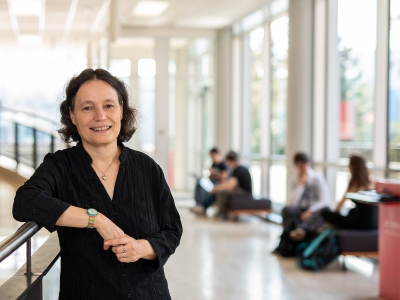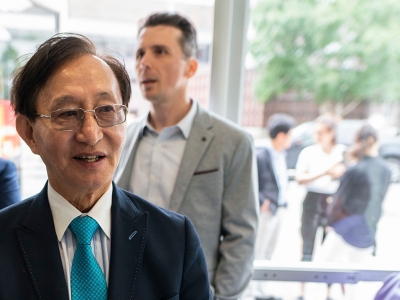Lead image by Maridav / iStock. Additional photos provided by Shahad Abdulmawjood
By Ahmed Minhas
There are few things as Canadian as maple syrup; found in nearly every household, its creation is a delicate process. Every spring, producers tap maple trees to harvest sap but as the temperature rises, the trees begin to bud.
This triggers a chemical shift that creates “buddy sap,” which is unusable for syrup production. There’s no taste or smell to warn producers, leaving them to discover the mistake only after boiling — by which time the batch is already spoiled.
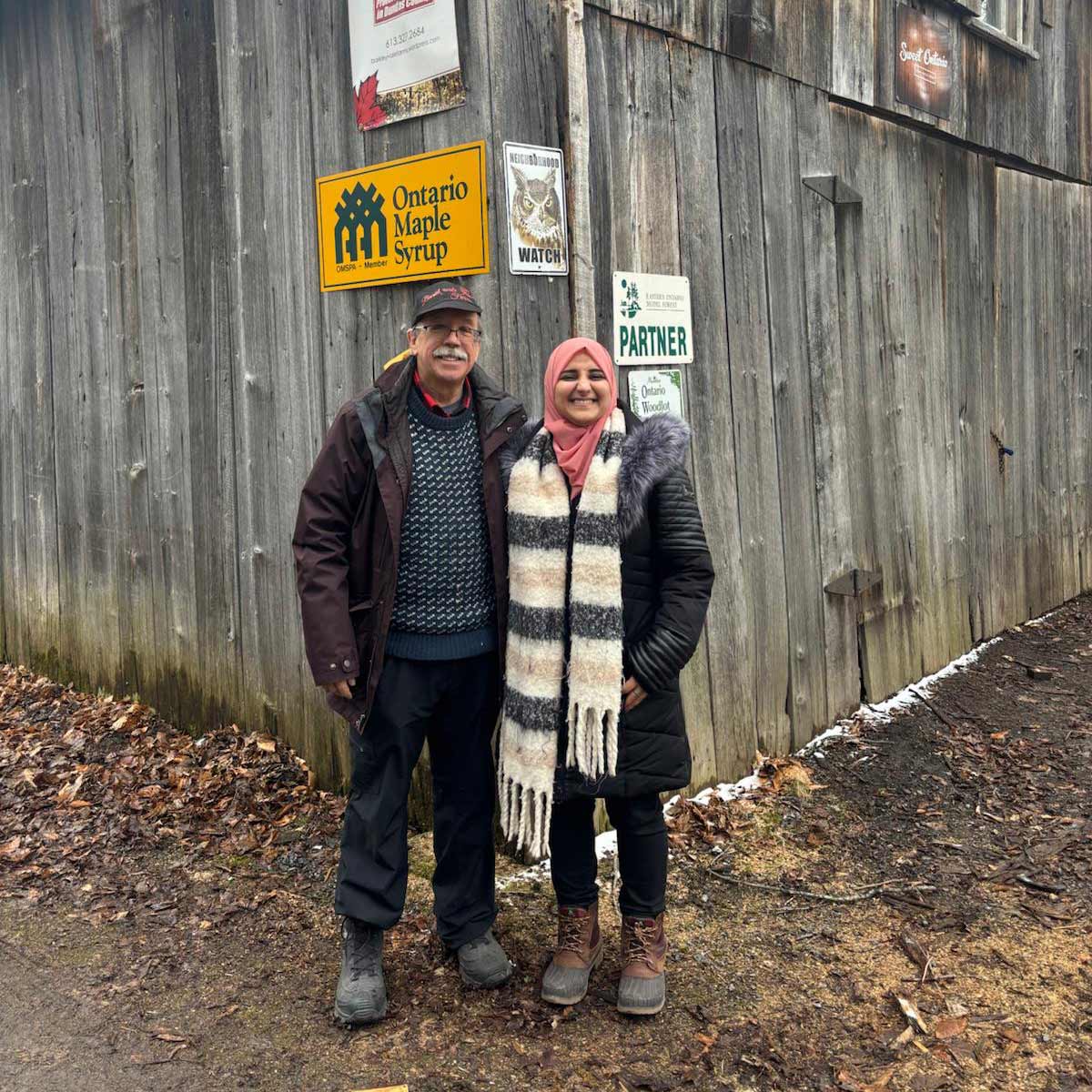
Carleton University PhD student Shahad Abdulmawjood with Brian Barkley, owner of Barkleyvale Farms in Chesterville
For decades, producers have relied on observational knowledge—such as watching for frog activity or listening for certain birds—to decide when to stop collecting sap. These land-based indicators, rooted in deep connections to the natural world, can be effective but require careful attention and experience to interpret.
Thanks to research by Shahad Abdulmawjood, a Chemistry PhD student at Carleton University, a simple test strip could make detecting buddy sap easier and instantaneous.

From Passion to Innovation
Abdulmawjood’s research focuses on developing lateral flow assays — imagine a household COVID-19 or pregnancy test — that can identify buddy sap.
The test strip is designed to detect two key amino acids, asparagine and methionine, which break down when the tree buds, producing compounds responsible for buddy sap.
By using aptamers — synthetic DNA molecules designed to recognize these compounds — the strip provides producers with a fast and reliable way to determine if their sap is still usable.

“Instead of going through the whole production process and realizing too late that the sap is bad, this test will allow producers to check before they start,” said Abdulmawjood.
Abdulmawjood’s interest in this research stems from her love for maple syrup. When she learned about the challenges producers face in detecting buddy sap, she was immediately intrigued.
“I’ve always loved maple syrup and when I heard about this problem, I knew I wanted to find a solution,” she said.
Her enthusiasm led her to take ownership of the project, determined to create a scientific alternative to the traditional methods producers have used for generations.
“I wanted to take out the guesswork and give producers an accurate way to know when their sap is no longer any good,” she said.
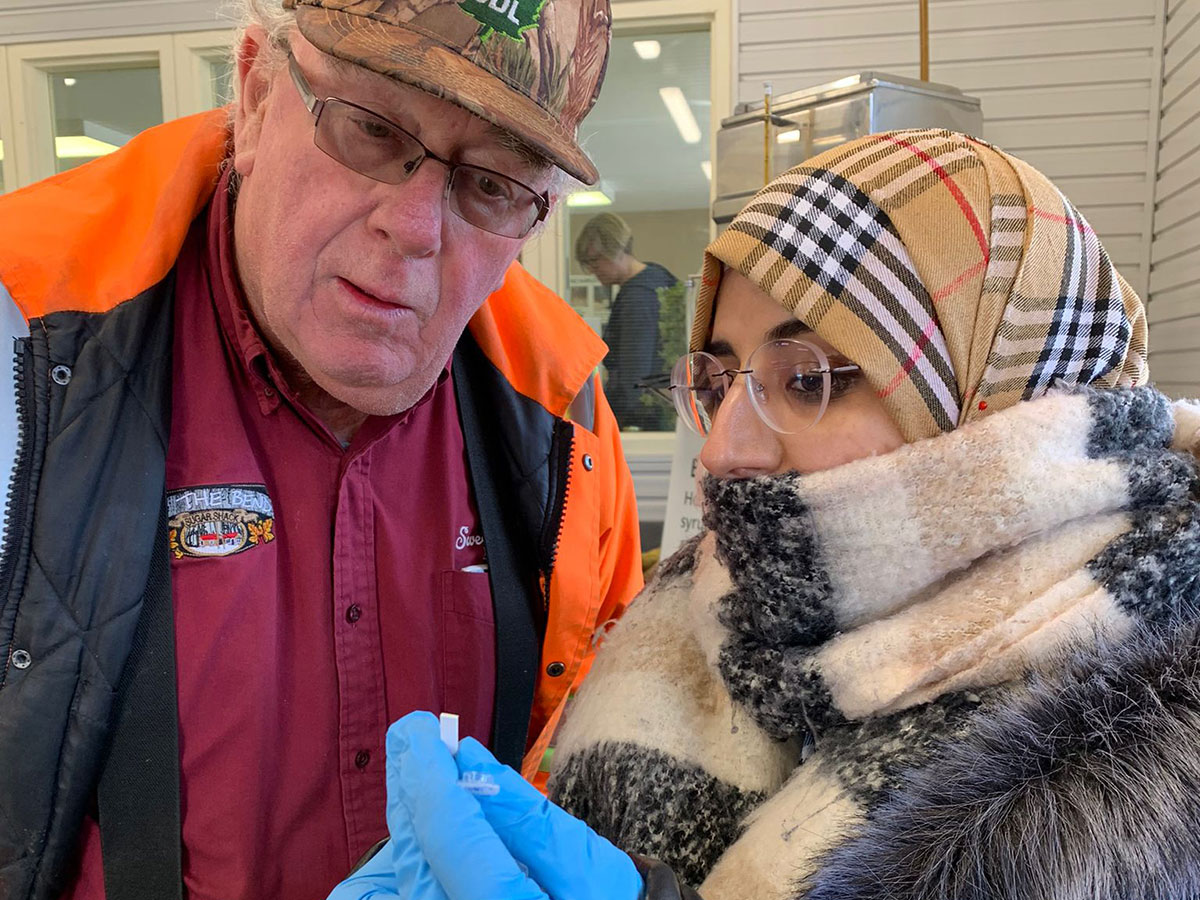
Research That Aims to Boost Profits for Maple Syrup Producers
Maple syrup production faces pressures from climate change and trade tensions with the U.S., making it crucial to meet market standards. Avoiding wasted production costs will help Canadian producers stay competitive and maximize profits in an increasingly challenging economic landscape.
Over the past two years, Abdulmawjood has worked closely with several producers, sending them prototype test kits for use in real-world conditions.
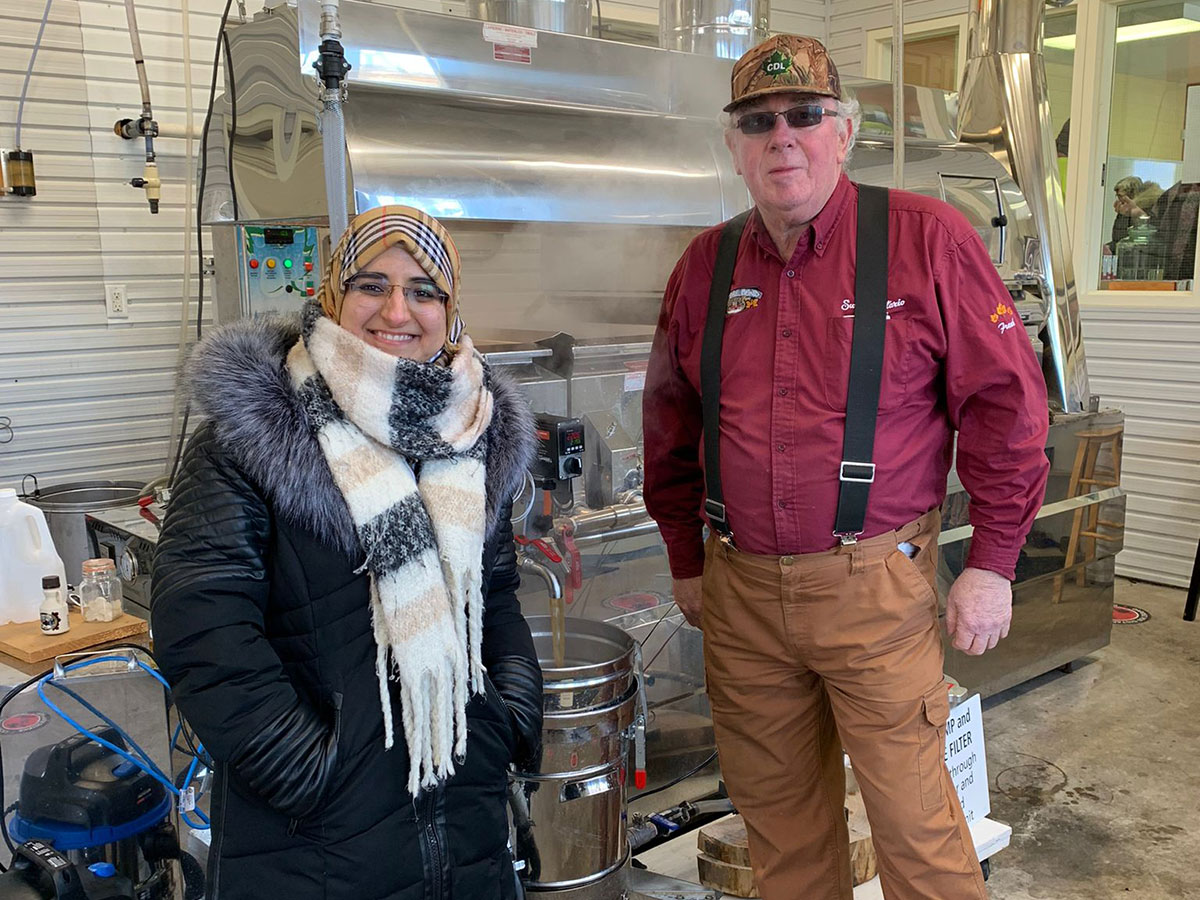
Abdulmawjood with Frank Heerkens, owner of On the Bend Sugar Shack
“Last year, I sent kits to four producers and this year, we expanded to seven,” she said.
Their feedback helps improve the test’s accuracy. Though initial results are promising, Abdulmawjood is still refining her prototype.
“Right now, I’m calling this my first-generation test strip,” she said.
“There’s still work to be done, but we’re seeing promising results.”
Her research has gained industry attention and received funding from the North American Maple Syrup Council and the Ontario Maple Syrup Producers’ Association, which awarded a $25,000 grant.
Beyond improving efficiency and preventing losses, the test could open new opportunities for producers. While most maple syrup makers want to avoid buddy sap, some U.S. craft brewers have expressed interest in using it to create uniquely flavoured beer. This unexpected demand could create niche markets for buddy sap, giving producers more options and revenue streams.
As she moves forward, Abdulmawjood hopes to perfect the strip and bring it to market, providing maple syrup producers with a practical tool to maintain product quality and protect their bottom line.
With the potential to save time, reduce waste and even open new markets, Abdulmawjood’s test strip could be a game changer for the industry.
“It has the potential to make a real impact,” she said.
“And that’s what excites me the most.”
Wednesday, April 2, 2025 in Faculty of Science, Innovation, Research
Share: Twitter, Facebook
